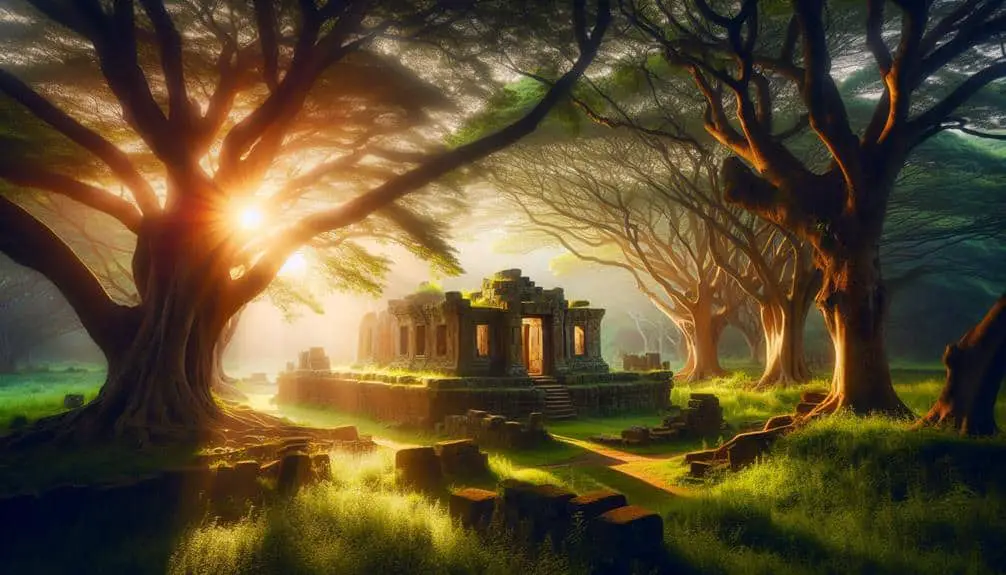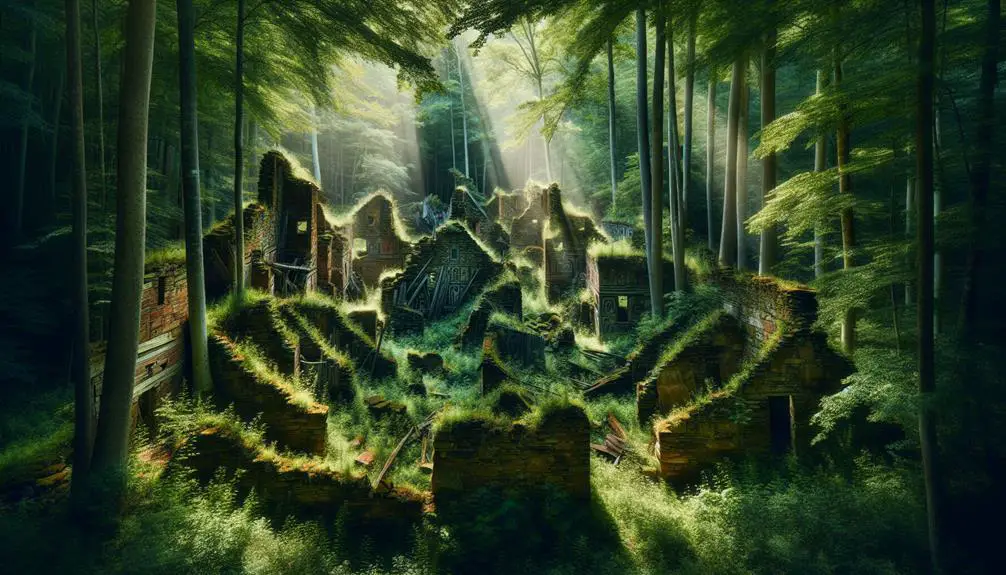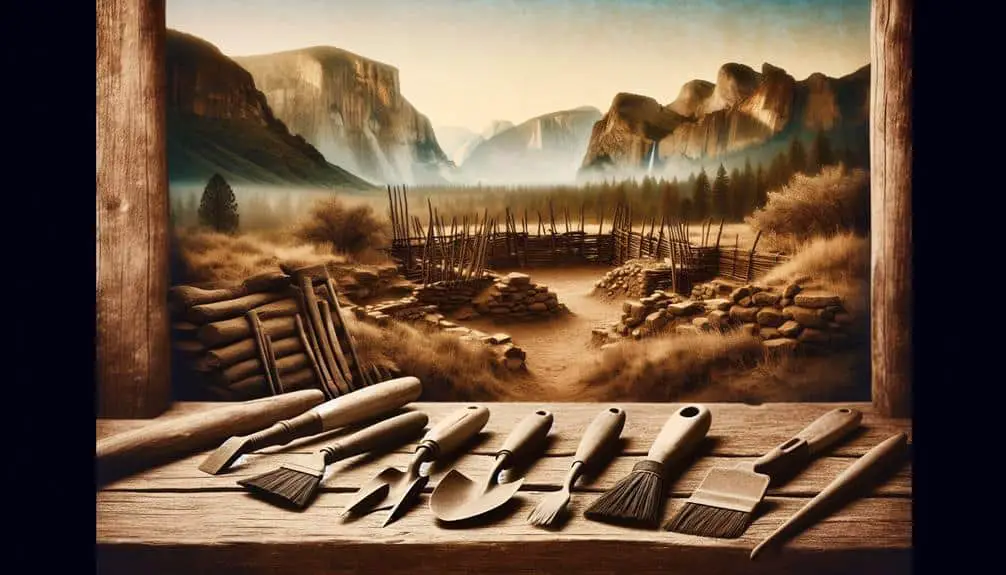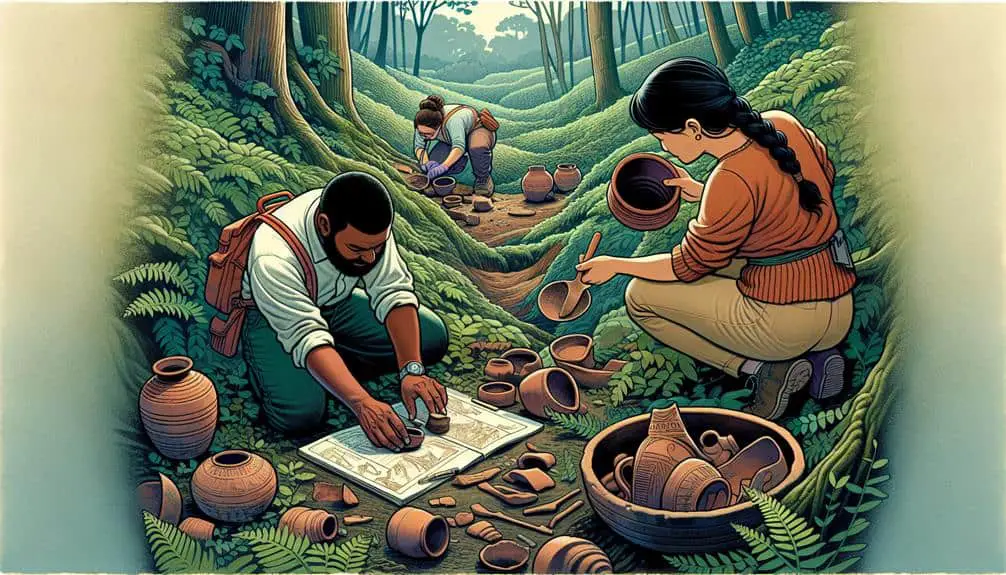Begin a journey through the US to discover remarkable remnants of Native American settlements. Marvel at ancient Pueblo ruins in the arid Southwest, offering insights into ancestral communities. Explore mysterious mounds built by the Midwest's enigmatic builders, showcasing cultural achievements. Witness the mesmerizing cliff dwellings in the Southwest, revealing architectural prowess. Uncover the intriguing longhouse structures in the Northeast, reflecting unique cultural traditions. Probe into the significance of earthwork mounds in the Southeast, each telling a fascinating story. These sites stand as evidence to the deep history and craftsmanship of indigenous peoples, waiting to be explored further.
Key Points
- Ancient Pueblo ruins in arid Southwest reveal ancestral insights and architectural prowess.
- Midwest mounds display cultural achievements with complex earthworks and celestial alignments.
- Southwest cliff dwellings showcase historical significance and communal life through artifacts and layout.
- Northeast longhouses reflect unique traditions with multifunctional spaces and social organization.
- Southeast earthwork mounds hold cultural significance with insights into beliefs and societal structures.
Pueblo Ruins in Southwest
In the arid landscapes of the Southwest, ancient Pueblo ruins stand as poignant reminders of a thriving indigenous civilization that once flourished in this region. The archaeological significance of these ruins can't be overstated, offering valuable insights into the lives, beliefs, and practices of the ancestral Pueblo people. Through meticulous excavation and analysis, researchers have uncovered a wealth of information about the architectural prowess, agricultural techniques, and social organization of these ancient societies.
Preservation efforts aimed at safeguarding these precious remnants of history have been instrumental in ensuring that future generations can continue to marvel at the ingenuity and resilience of the Pueblo people. From protective structures to controlled visitor access, various strategies have been implemented to strike a balance between allowing public engagement and conserving the delicate ruins. By fostering an appreciation for the cultural heritage encapsulated within these ancient sites, preservationists aren't only protecting the physical structures but also honoring the enduring legacy of the Native American communities that called these places home.
Mound Builders in Midwest
Amidst the fertile lands of the Midwest lie the enigmatic remnants left behind by the ancient Mound Builders, revealing a rich tapestry of cultural and architectural achievements. The Midwest mounds, ranging from simple structures to complex geometric earthworks, stand as evidence to the sophistication and ingenuity of these early inhabitants. These mounds, found in states like Ohio, Illinois, and Missouri, served various purposes – from burial sites to ceremonial centers. The precision with which these mounds were constructed showcases the advanced knowledge of the Mound Builders in fields like engineering and astronomy.
The Midwest mounds aren't just piles of earth but intricate formations that align with celestial events, indicating a deep understanding of the cosmos. The scale and intricacy of these ancient architectures continue to captivate historians and archaeologists, shedding light on the spiritual and social practices of the Mound Builders. Exploring these Midwest mounds offers a glimpse into a bygone era where reverence for the land and sky shaped monumental landscapes that still resonate today.
Cliff Dwellings in Southwest
Nestled within the rugged landscapes of the Southwest are the mesmerizing cliff dwellings, showcasing the architectural prowess and historical significance of the ancient inhabitants. These rock formations served as natural shelters, where Native American communities built their homes into the cliffs, utilizing the natural protection they offered. The cliff dwellings not only provided safety but also a vantage point for defense and observation.
Exploring these cliff dwellings reveals a treasure trove of archaeological artifacts. From pottery fragments to tools, these remnants offer a glimpse into the daily lives of the people who once called these cliffs home. The layout of the dwellings, often interconnected and multi-storied, speaks to a structured community life. The strategic placement of these dwellings within the cliffs highlights the resourcefulness and adaptability of these ancient peoples.
As you stand before these cliff dwellings, you aren't just witnessing ancient architecture but also the resilience and ingenuity of the Native American tribes who thrived in harmony with the land.
Longhouse Remnants in Northeast
Among the historical remnants scattered throughout the Northeast region of the United States, lie the intriguing longhouse structures that offer a glimpse into the architectural and communal practices of Native American tribes. Longhouses hold significant archaeological importance, showcasing advanced construction techniques utilized by indigenous communities. These structures were constructed by placing wooden poles in a parallel fashion and covering them with materials such as bark or thatch. The design of longhouses varied among tribes, reflecting unique cultural traditions and community structures.
Longhouses served as multifunctional spaces within Native American settlements. They weren't merely shelters but also centers for social gatherings, ceremonies, and daily activities. The layout of longhouses often included a central corridor with compartments on either side for different purposes. Understanding the layout and construction of these longhouses provides insight into the daily lives and social organization of the Native American tribes that inhabited the Northeast. Visiting these remnants allows you to connect with the rich history and craftsmanship of the indigenous peoples who once thrived in these lands.
Earthwork Mounds in Southeast
Have you ever wondered about the intricate Earthwork Mounds scattered throughout the Southeast region of the United States and their significance in Native American history and culture? These mounds, built by indigenous peoples centuries ago, hold immense cultural significance and offer valuable insights into the past. Excavation techniques have led to the discovery of various artifacts within these mounds, shedding light on the daily lives, rituals, and beliefs of the ancient inhabitants.
The Earthwork Mounds aren't just physical structures; they're symbolic representations of the spiritual beliefs and societal structures of Native American tribes. Efforts to preserve these mounds are vital in maintaining the heritage and history they embody. From ceremonial sites to burial grounds, each mound tells a unique story of the people who once thrived in these lands.
Frequently Asked Questions
How Did Native American Tribes in Different Regions Communicate With Each Other Before European Contact?
Before European contact, Native American tribes in different regions communicated through intertribal communication and trade networks. Despite language barriers, they engaged in cultural exchanges, sharing knowledge, goods, and ideas to foster connections and mutual understanding.
What Types of Tools and Materials Did Native Americans Use to Build These Historic Settlements?
You used natural resources ingeniously, mastering construction techniques with traditional tools. From intricate woven structures to sturdy wooden dwellings, your indigenous architecture reflected a deep connection with the land and a rich cultural heritage.
How Did Native American Societies Within These Settlements Govern Themselves and Make Decisions?
In traditional governance, Native American societies within settlements made decisions through consensus-building and communal discussions. Decision-making processes were inclusive, ensuring that every voice was heard and respected to maintain harmony and unity.
What Were the Main Sources of Food for Native American Communities Living in These Settlements?
You likely gathered that Native American communities sourced food through hunting, gathering, farming, and fishing. These methods sustained their settlements, providing diverse diets and supporting their way of life for generations in the US.
How Did the Arrival of Europeans Impact the Daily Lives and Cultures of the Native American Tribes Living in These Historic Settlements?
When Europeans arrived, daily life and culture of Native American tribes in historic settlements changed drastically. The impact of trade and cultural exchange altered traditions, social structures, and economies, leading to a complex mix of adaptation and resistance.



